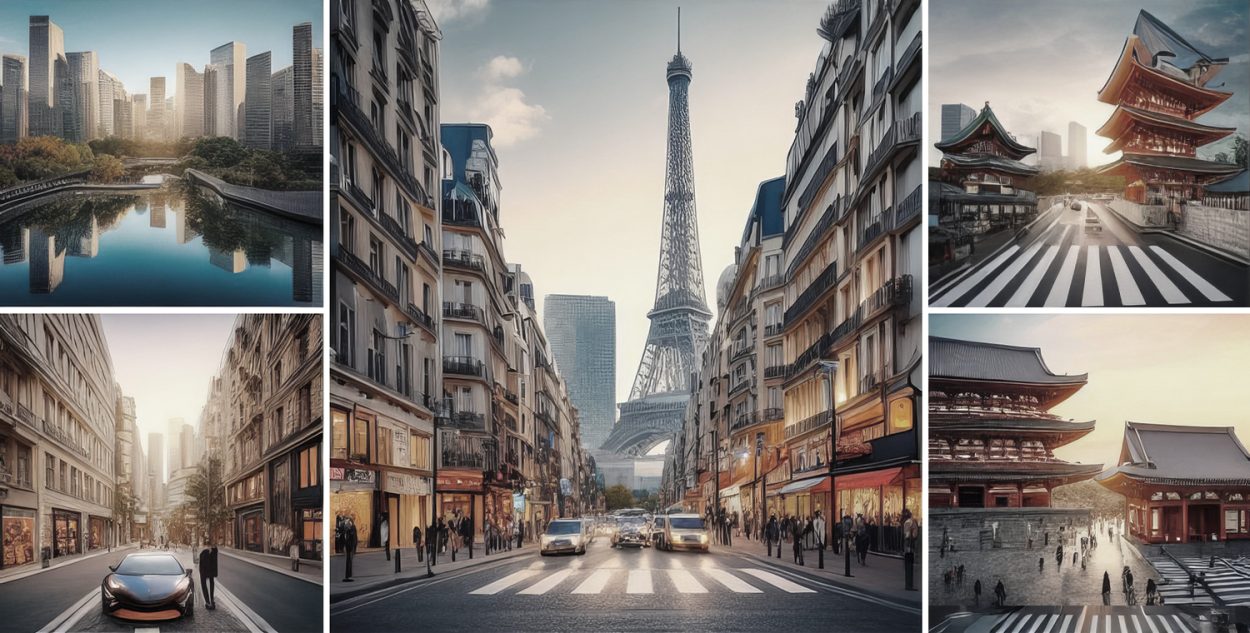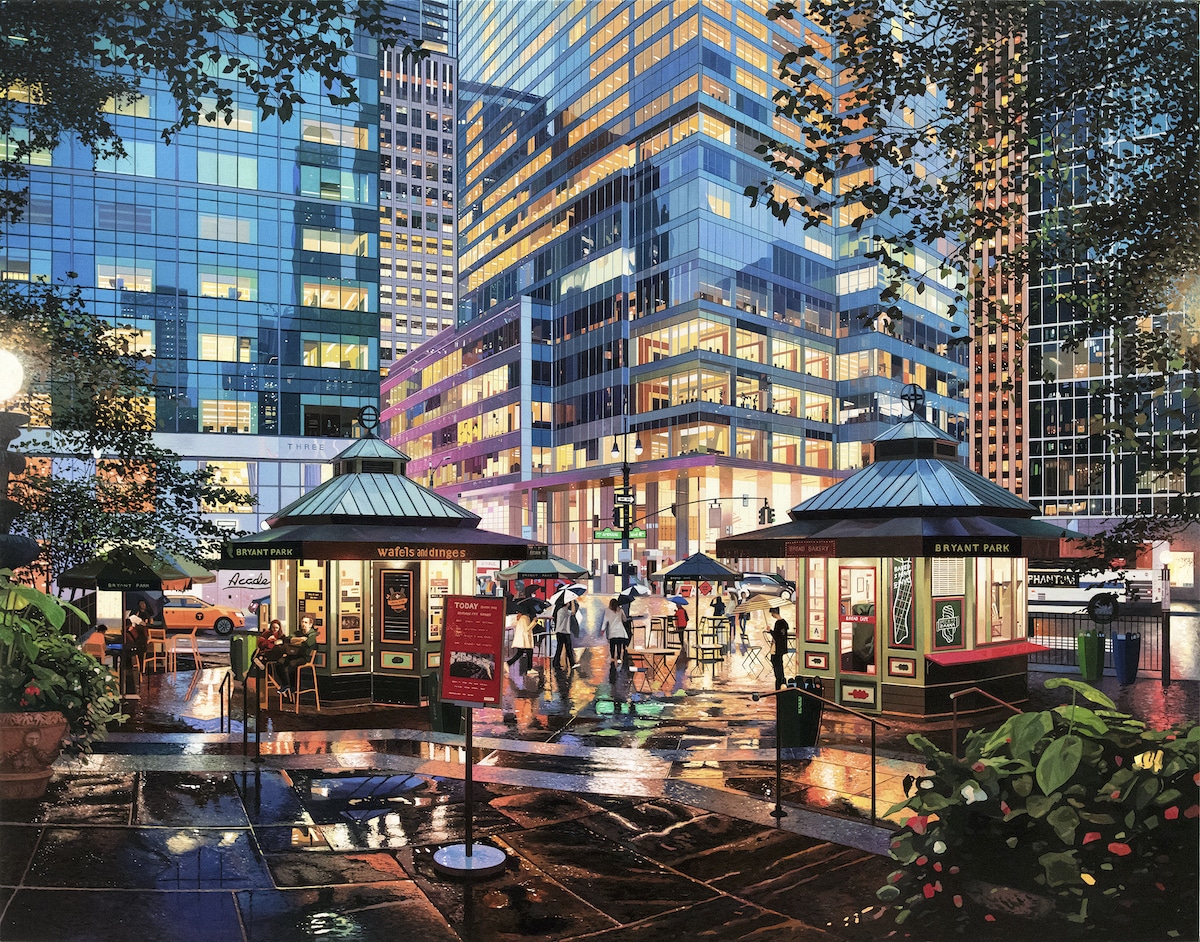Wall Art
From Paris to Tokyo: Diverse Cityscape Art from Around the World

Cityscapes, the artistic depictions of urban environments, capture the energy, architecture, and essence of cities across the globe. From bustling metropolises to quaint towns, cityscape art reveals a city’s character, history, and constant evolution. This post delves into the diversity of cityscape art worldwide, exploring how artists from different cultures interpret the urban landscape.
A Journey Through Artistic Cityscapes
Throughout history, artists have been drawn to the city. Let’s take a tour of some iconic cityscape art movements and explore how artists have portrayed urban settings over time:
- European Romanticism and Impressionism: Artists of the Romantic period (late 18th-19th centuries) emphasized emotion and awe over realism in their urban scenes. Later, Impressionism brought a focus on light and its fleeting effects on a city. Claude Monet’s series on the Boulevard des Capucines in Paris (https://en.wikipedia.org/wiki/Boulevard_des_Capucines) and Camille Pissarro’s numerous Paris boulevards ([invalid URL removed]) capture the city’s vibrant atmosphere.
- American Realism: In the early 20th century, American artists like Edward Hopper (https://en.wikipedia.org/wiki/Nighthawks) depicted urban spaces with a stark realism that often conveyed themes of loneliness and alienation. Hopper’s iconic “Nighthawks” remains a haunting masterpiece of American realism.
- Japanese Woodblock Prints: These Ukiyo-e prints flourished between the 17th and 19th centuries in Japan, often depicting serene urban landscapes, bridges, and street scenes. Works by masters like Hiroshige (https://en.wikipedia.org/wiki/Hiroshige) and Hokusai (https://en.wikipedia.org/wiki/Hokusai) are renowned for their stylized beauty and meticulous detail.

Claude Monet (1873-74) Boulevard des Capucines
Contrasting Visions: Cultural Interpretations of the City
Beyond the shifts in artistic movements, culture plays a significant role in how cities are portrayed:
- Eastern Perspectives: Traditional Asian cityscape art, such as Chinese scroll paintings, frequently incorporates nature. Cities are nestled within landscapes, emphasizing harmony between the built environment and the natural world.
- Western Perspectives: Urban scenes in Western art often emphasize the grandeur of architecture, the towering scale of buildings, and the city’s dominance as a symbol of human achievement.
- Modern & Contemporary Interpretations: Cities are now explored in diverse styles—from abstraction to hyperrealism. Contemporary art offers a critical lens on social issues, industrialization, and the impact of urban growth.

“Bryant Park,” oil on linen, 2020
Common Themes Across Cityscape Art
Despite cultural differences, certain motifs and themes unite cityscape art across the globe:
- The Dynamics of Daily Life: Cities bustle with activity, and artists have long captured the routines and rhythms of urban life. Think bustling markets, busy street vendors, and people in transit.
- Light and Shadow: The play of light on buildings, the reflections in windows, and the long shadows cast across streets offer a mesmerizing visual language that translates well onto canvas or screen.
- Architectural Wonders: Cityscape artists often celebrate iconic structures and the unique architectural signatures that define a city’s skyline.
- Solitude and Connection: Cities are both a place of crowds and of solitary experiences – both find expression in cityscape art.
Urbanization, Globalization, and the Cityscape of Tomorrow
The rise of megacities and the influence of globalization drastically transform the urban landscape. Artists respond to these phenomena in varied ways:
- Urban Transformations: Artists document the rapid growth, demolition, and renewal of cities. Works may express anxieties about development or a sense of awe at the ever-changing urban fabric.
- Networks and Connections: Depictions of transportation networks, communication infrastructure, and the flow of people and goods emphasize the interconnectedness created by globalization.
- Sustainability and the Future: Artists examine concerns about pollution, population density, and climate change through their depictions of cities, offering visions of sustainable and resilient urban environments.
Celebrating the Art of the City
Cityscape art provides a window into the world’s diverse urban centers. By examining how artists from different cultures perceive and portray cities, we gain a deeper understanding of their unique identities, histories, and evolving narratives. This art allows us to travel through time and across continents, witnessing the allure, energy, and complexities of the urban world through the eyes of its creators.

